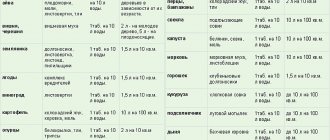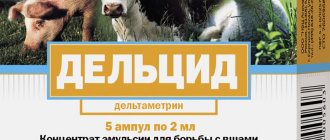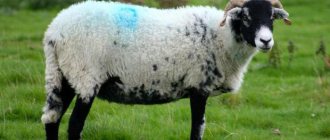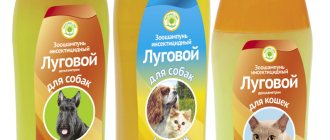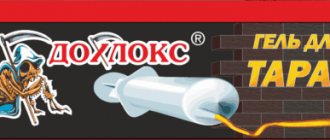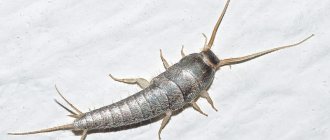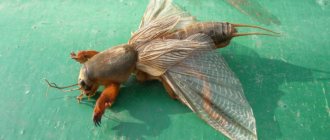Castration is an intervention performed to stop the sexual function of an animal. This operation has been widely used in agriculture since ancient times. It is mentioned, for example, by Xenophon and Aristotle. Today, this procedure is also performed quite often on farms. Many Internet users, for example, are interested in whether bulls are castrated. Of course, cattle are also subjected to such interference. This type of procedure can be carried out both in large livestock complexes and in small businesses or on personal farms.
Necessity of the procedure
A bull and an ox - what is the difference between them, we thus found out. But why is castration carried out on farms? Most of the bulls kept on livestock farms are subjected to a similar procedure. Only producers with good breed qualities are not castrated on farms. Such bulls are left for breeding and are used in the future for mating with cows in order to obtain high-quality offspring.
Castration of meat animals allows, first of all, to achieve an increase in productivity in terms of meat yield. After this procedure, the character of the bulls changes significantly. They become calmer, eat better, and therefore gain weight faster.
Since castrated bulls are generally docile, they are much easier to care for than sires. This, of course, can also be attributed to the advantages of such an operation.
Farmers believe that another undoubted advantage of castration is that in this case it is possible to completely control the productivity of the herd in terms of producing offspring. Oxen simply do not have the opportunity to accidentally cover cows, for example, in a pasture.
The advantages of such intervention, of course, include improving the quality of bull meat. In uncastrated animals it has a specific, not very pleasant odor. This is especially true when it is cooked hot. In castrated bulls, the meat is soft, juicy, tender and does not have any unpleasant odor.
Pros and cons of sterilization treatment
Some diseases of the genital organs in male cattle cannot be treated. And, if the bull is not castrated in a timely manner, he may simply die. Veterinarians recommend this option only in extreme cases when other treatment methods no longer work.
If a breeding bull becomes seriously ill, this is a big nuisance for the breeder. The owners have to completely change their plans for him, since this specimen will no longer be able to participate in breeding. In such cases, a decision is made to sterilize the animal. However, this is not always a disaster, as it might initially seem.
A castrated individual can be fattened for meat and thereby cover the costs of a new stud bull. Thus, farmers have the opportunity to inject “new blood” into the herd, which is a plus.
Disease intervention
In some cases, the need for such a procedure arises not for economic reasons, but in order to preserve the health of the animal. Castration of bull calves on farms can, for example, be used to prevent:
- sexual trauma;
- collagenosis;
- D-vitaminosis.
The answer to the question of why bulls are castrated is often the need to treat the animal. For this purpose, this procedure can be carried out, for example, when:
- dropsy of the common vaginal membrane;
- orchitis.
Age
Puberty in lambs occurs on average at 6 months. In some early maturing breeds, signs of puberty may be observed even earlier. The optimal period for removing the testes occurs 3-4 weeks before the completion of the development of the genitourinary system. The minimum acceptable age for castration of lambs is 3-4 months. Intervention carried out earlier than the specified period can cause significant disturbances in metabolic processes and cause growth retardation in comparison with sheep not subjected to intervention. If rams are castrated after maturity, behavioral sexual responses may persist for some time.
Adult males that have become unsuitable for breeding work are operated on several months before slaughter, during which the male is fattened and the meat loses its specific smell.
To prevent possible complications, mass castration on farms is recommended to be carried out in the autumn or spring months. Low air temperature and the absence of insects carrying pathogens reduces the likelihood of bleeding, inflammatory processes and other pathological conditions.
Contraindications to the procedure
The decision as to whether a bull needs to be castrated on farms is therefore made for reasons of economic expediency. In most cases, this procedure is considered necessary. But, unfortunately, sometimes bulls kept on farms are not allowed to be castrated. Contraindications to this procedure are, for example:
- exhaustion of the animal;
- illness in a prolonged or acute form;
- early age of the bull.
Bulls on farms are not castrated two weeks before the start of preventive vaccination. Also, this procedure is not allowed to be carried out within 14 days after vaccinations.
Complications
The most dangerous complications of castration include bleeding. If the ligature is applied incorrectly and the cord is weakly pulled, bleeding may occur from the vessels of the scrotum or the arteries of the vas deferens. For minor discharge, hemostatic drugs are used. Severe bleeding in bulls is stopped by repeated application of the ligature.
After open castration methods, as a result of the use of unsterile instruments or insufficient treatment of wound surfaces, some bulls experience possible complications such as infection entering the wound and the development of inflammation. If the process is not stopped in a timely manner, it can cause blood poisoning and the death of the male.
In the first few days after castration, bulls will experience bruising, redness, and swelling in the genital area. They usually resolve on their own without medication.
Some methods of castrating bulls seem quite easy. In this regard, many who are engaged in breeding cattle on an industrial scale and are constantly faced with the need to defertilize bulls, the question arises: is it possible to carry out such operations on their own? Despite the apparent simplicity of the intervention, especially when using percutaneous methods, castration is a serious procedure and requires both theoretical training and sufficient practical skills.
In cases of urgent need to remove the testes, bulls should undergo DIY training under the supervision of a qualified specialist. It is better if the veterinarian not only explains the theory, but also helps carry out the first operations to gain practical experience. You should not castrate bulls yourself, relying on video materials and articles from the Internet. This can lead to complications and subsequent death of animals.
Before castrating calves or bulls, it is necessary to decide on the advisability of the intervention, choose the most suitable method of carrying out the procedure, weighing all the pros and cons. Successful restoration of bull calves primarily depends on the qualifications and experience of the person who will perform castration. Potential problems and complications in bulls can be prevented by contacting a veterinarian with experience in performing such operations and having the appropriate license.
Methods of castration
Castration of bulls on farms can be carried out using different technologies. Intervention to stop sexual function can be surgical or bloodless. Currently, both types of castration are practiced on livestock farms.
Surgical intervention, in turn, can be:
- open;
- closed;
- percutaneous
Bulls on farms are usually castrated using the first method. During this procedure, the animal can be in either a standing or lying position. When using the surgical castration technique, bulls are first given anesthesia. When using the bloodless method, this procedure is not performed.
Bloodless methods of emasculating lambs
There are two known today. The first is produced using a special device called burizzo. It is used for both tail docking and castration.
Using burizzo, the skin and flesh along with the testicles are compressed. Thanks to this action, they bleed and dry out. It can be considered positive that it allows you to avoid infection of open wounds and tetanus infection of the animal. The negative side is that the procedure is quite painful and takes a long time.
Rubber rings are also a bloodless method. This procedure can last from 10 to 20 days.
Sometimes sheep farmers use rubber rings for shortened castration, when they only tighten the skin of the scrotum without capturing the testicles. This process is less painful. But the desired result is achieved, since the raised testicles cannot participate in the fertilization of females.
When is the best time to carry out
The age of bull calves for castration is determined primarily depending on their breed and degree of development. For example, Simmental animals are usually operated on at 5-7 months with a body weight of at least 150 kg. In this case, it will be possible to slaughter a bull at a later age already at 12 months of age.
Castration of cattle on farms is allowed at any time of the year. However, most often this procedure is performed in the spring or autumn - when it is cool. At this time there are practically no flies on the farm. And consequently, the likelihood of wound infection is significantly reduced.
Experienced livestock breeders recommend, among other things, castrating bulls on farms in the morning. In this case, it becomes possible to observe the animal during the day.
Pain relief
Young animals under one and a half years of age do not need anesthesia before surgery. For older bulls it is mandatory. Anesthetic medicine is injected into the spermatic cord and the wall of the scrotal area along a cut scar. The scrotum next to the neck is firmly grasped with the fingers of the left hand and pulled back a little. You need to feel the location of the spermatic cord through the skin.
You won't need a syringe at first. A thin needle is taken, it should be used to pierce the back of the neck, the needle tip should reach the spermatic cord in such a place that the testis is 7 or 12 centimeters lower. If blood begins to ooze from the needle, you need to stick it in deeper, but you can pull the needle back until the bleeding stops.
To make it more convenient and safer, the syringe and needle are connected with a thin rubber tube. For each cord, a four percent novocaine solution in an amount of 5 milliliters is required. The tissue of the cut lines is infiltrated with a novocaine solution of 0.25 or 0.5 percent.
Preparing bulls
Reviews about castrated bulls from farmers are, of course, in most cases positive. Such animals, with lower feed costs, gain weight much faster, get sick less often and do not cause their owners any inconvenience in terms of care.
Actually, the castration procedure itself is not too complicated. In any case, it is safe for the health of the animal if all required technologies are followed. However, it is, of course, imperative to prepare the bull for such intervention. Before castration:
- the animal is carefully examined to identify any diseases;
- determine the size of the bull's testes;
- keep the bull on a starvation diet.
Animals are not fed for 12-14 hours before castration. During this period, bulls are given only water. Before the operation itself, the animal is driven outside for a while. The bull must empty his intestines and bladder.
Features of the anatomical structure of the gonads
The shape of the testes is oval, in young ones it is more elongated, and with maturity it becomes rounder. The sizes have a strong age dependence - during the period of mass castration (2-5 months) they usually do not exceed a chicken egg. The body of the testis consists of parenchymal tissue, separated by stroma, and connective tissue. A distinctive feature of rams is the weak development of stroma and the prevalence of parenchyma, which makes the testes less dense and durable.
The seminal appendage is represented by a network of convoluted vas deferens, forming a dense formation. It has separate nutrition due to the vessels of the vas deferens, which is separated from the umbilical branch.
The scrotum is a large skin sac that contains the gonads of the sheep. A specific feature is the low descent of the testes and the formation of a scrotal neck. Layers and shells:
- leather. Relatively thin in young rams, covered with small hair, containing fat and sweat glands, divided by a median suture;
- The muscular layer is a durable membrane connected to the skin and forming separate cavities for each testis. In old rams it contains developed fatty tissue;
- common tunica vaginalis - a layer formed by protrusion of the inner part of the abdominal wall when the testis descends;
- special vaginal membrane - covers the gonads along with the appendage.
Preparing tools
Of course, before the operation, the room itself and equipment are carefully prepared. When castrating bulls using the open surgical method, the following is used:
- sharp abdominal scalpel;
- scissors.
Such equipment is disinfected in a solution prepared using:
- sodium carbonate 1%;
- sodium hydroxide 0.1%;
- Boers 3%.
Such ingredients are pre-dissolved in water. Next, the instrument is immersed in the resulting disinfectant liquid and boiled in a sterilizer. The ligatures are soaked for a day in a 4% formaldehyde solution.
Immediately before the operation, the veterinarian should also wash his hands in a solution of 0.5% ammonia, wipe them with a towel and treat them with alcohol. In preparation for castration, the surgeon must, among other things, lubricate the fingertips with iodine.
Castration loop: algorithm of actions
The castration loop is an important step in such an operation as sterilization of bulls. It is necessary to follow the rules so that the procedure goes without problems and the wound heals without complications. The algorithm of actions is as follows:
- loop a silk thread around the appendage;
- circle the end of the thread near the tail of the appendage again and lower it into the first loop;
- tighten the thread until a white edge is formed;
- make a third loop for insurance;
- cut off the appendage and testis below the place where the knot is tied;
- Cauterize the cut-off site with iodine solution;
- After making sure that the incision has stopped bleeding, cut off unnecessary threads;
- sew up the incision and treat the edges of the wound with iodine solution.
After completing the operation, it is recommended to treat the perineum with terramycin or streptocide. Both medications must be placed inside the wound.
Fixation methods
In order to ensure the immobility of the animal during castration, for example, the following method is often used:
- take a long rope and tighten it at the base of the horns with a movable loop;
- direct the rope back and draw a tightening loop around the body;
- again move the rope back in front of the maklaks and make a second loop;
- the end of the rope is brought under the bull's leg.
After this, one of the farm workers directs the bull's head in the direction opposite to the fall. The other two are pulling on the end of the rope. As a result, the squeezed animal's knees bend and it lies on its side. Next, the bull is finally strengthened, and his head is pressed to the floor.
Rewrapped technique
A bloodless method of castration of young or adult bulls. The neck of the scrotal area is trimmed and wiped with an alcohol-containing solution. A castration loop is applied.
Tip: In order to separate the testes, the ligature is tightened using sticks tied to the ends of the ligature. This way the loop is guaranteed to be tight.
Before applying a castration loop, you can apply forceps to the cervical area of the scrotum and squeeze the tissue for 5 minutes. After removing the forceps, a groove is formed, to which a tight ligature is applied. The castration loop is secured like a sea knot. Several days will pass, and the testes will fall off, and the scrotum and ligature will also separate.
How is the operation performed?
Photos of castrated bulls are presented on the page. As you can see, the animals are in most cases large and healthy. However, in order not to harm the bull, such intervention, of course, must be carried out correctly.
Before castration, hair is removed from adult animals on the surgical site. In young bulls, the hair in this area is usually sparse. Therefore, such a procedure is optional for them. At the next stage:
- the surgical field is treated with a disinfectant material, for example, an alcohol solution of iodine;
- give the bull pain relief with novocaine (3% 10 ml);
- grab the animal’s scrotum together with the testis with the left hand and move it back;
- the scrotum is dissected along the greater curvature of the testis, 1.5 cm away from its suture;
- pull the testis out of the scrotal cavity and dissect the transitional ligament;
- the mesentery is ruptured and a ligature is applied to the thinnest section of the cord;
- cut the cord with scissors, stepping back from the dressing by 1.5 cm.
At the final stage, during open castration, blood clots are removed from the bull’s scrotum, and the wound is powdered, for example, with streptocide. Sutures are not placed on wounds during this operation.
Ligature technique
There are different methods for castrating bulls. The ligature method is closed, and implies that the bull is strengthened in a lying position on its left side. The operation is performed by two or three people. The treated scrotum is pulled back by the upper part until the folds are straightened. The tip is cut off using scissors or a scalpel, and the segment of the scrotum should be no wider than 2 or 3 centimeters.
When the tip of the scrotum is cut off, the first and second testes emerge from it, covering the common vaginal membranes. First, I work with one testis; it must be grabbed using forceps and removed from the scrotal cavity. At the same time, the second hand must dissect, that is, the skin is moved towards the peritoneum, and the ligature is applied to the cord at a distance of 3 or 5 centimeters from the testis.
When the common tunica vaginalis is prepared, you need to use forceps to hold the testis, while at the same time passing the spermatic cord between the fingers of the second hand so that the skin moves to the peritoneum. During the process, the surgeon applies a ligature, which is a castration loop, also called a fisherman's loop. The method was once proposed by Obukhov.
Tip: To prevent the bull from throwing off the castration loop, it is applied tightly, the thread should cut deep into the tissue.
For large bulls, it is recommended to apply a second ligature one and a half or two centimeters from the initial ligature. Before this, the common vaginal membrane is cut circularly, which exposes the spermatic cord, onto which a second ligature is made.
The two ligatures are tied at their ends to prevent the spermatic cord from slipping upward. The second testis is removed in the same way. Castrated bulls are observed for a couple of days. Be sure to lubricate the edges of the postoperative wound. Creolin, iodoform and lysol ointments are suitable for this. The ointment is especially beneficial in summer; the smell repels flies.
On the second day after sterilization, wiring is prescribed a couple of times a day for 20 minutes or half an hour. After a week or 10 days, the bull can be used for work.
Caring for the animal in the following days
In most cases, bulls tolerate castration very well. However, they should, of course, be given the most careful care in the postoperative period. After the intervention, a castrated bull must be placed in a clean pen with bedding made of straw rather than sawdust. In the future, the animal is well fed and the wound is periodically examined. When suppuration occurs, it is cleaned and treated with an antiseptic. The condition of a bull's wound after castration should be monitored as carefully as possible.
Postoperative period
Care after the intervention depends on how the castration was carried out. If percutaneous methods are used, bulls are examined 30-40 minutes after the procedure. After elastration, a decrease in scrotal temperature is considered normal. Complete death of the testes in bulls occurs within 20-30 days.
In case of crushing of the spermatic cords in bulls using a closed method, a hematoma is formed at the site of application of forceps, which is palpated through the skin. The success of castration is indicated by a decrease in the size of the testicles and a change in their density. If after 1-1.5 months this is not established when examining the bulls, a repeat operation is performed using the open method.
Castration with removal of the testes requires more attention
During the postoperative period, bulls must be kept dry and clean, and daily inspections must be carried out, paying special attention to the condition of the wound. If mucus, bloody or purulent discharge appears, you should seek medical help as soon as possible.
Use in agriculture
We have thus found out what a castrated bull is called. As already mentioned, in our time, mainly animals raised for fattening are subjected to a similar procedure. That is, they use oxen for meat. Also, such animals are sometimes used even today as draft animals in horse-drawn carts. Oxen, as already mentioned, have a calm character and can be very easy to control.
The manure of such cattle, like that of bulls, is widely used as fertilizer for growing various types of crops. The quality of this fertilizer is superior to most other organic ones. In this regard, ox manure is second only to horse manure. This fertilizer can be used both for fertilizing gardens and vegetable crops, as well as agricultural crops. Simply rotted oxen manure or even industrial fertilizers made from it can be used in fields and private suburban areas.
Making oxen from bulls
Ox is a common name for castrated bulls, which is still considered relevant today. Some time ago it was impossible to do without oxen on the farm, because with their help all the heavy work was done. Harnessing ordinary bulls and forcing them to work in the fields is quite difficult, because such animals have a tough temperament.
For this reason, only castrated individuals were taken for heavy work. These animals are calmer, listen better to the owner and can work longer than bulls who have retained their reproductive function. And farmers preferred not to bring breeding bulls into the fields, whose main function was to fertilize cows.
Currently, “ox labor” has been preserved on small farms. Today, farmers castrate outbred animals, because using an ox to transport goods over short distances is much more efficient than using a tractor or truck.
Why sheep farmers sometimes resist covering females
Often different animals are kept on the same farm. A sheep farmer, for example, purchased individuals of more advanced breeds. But he still has some young stock left from the previous plant. Mixing different breeds of animals is not only pointless, but also harmful.
Some females, being early ripening, are ready for mating at a fairly young age. But fertilization ahead of time will undermine the health of the animal; its offspring may be weak and non-viable.
There is also the danger of covering the ewe with a weak ram. This can also lead to the birth of a low-quality offspring.
To prevent this from happening, the farmer is forced to keep males and females separately. And he also has to allocate pastures for grazing in different places. And this requires attracting additional labor units and financial investments. Therefore, the easiest way out here would be to castrate outbred or simply excess rams. Indeed, for the normal functioning of a herd of 15 sheep, one full-fledged adult ram is quite enough.
